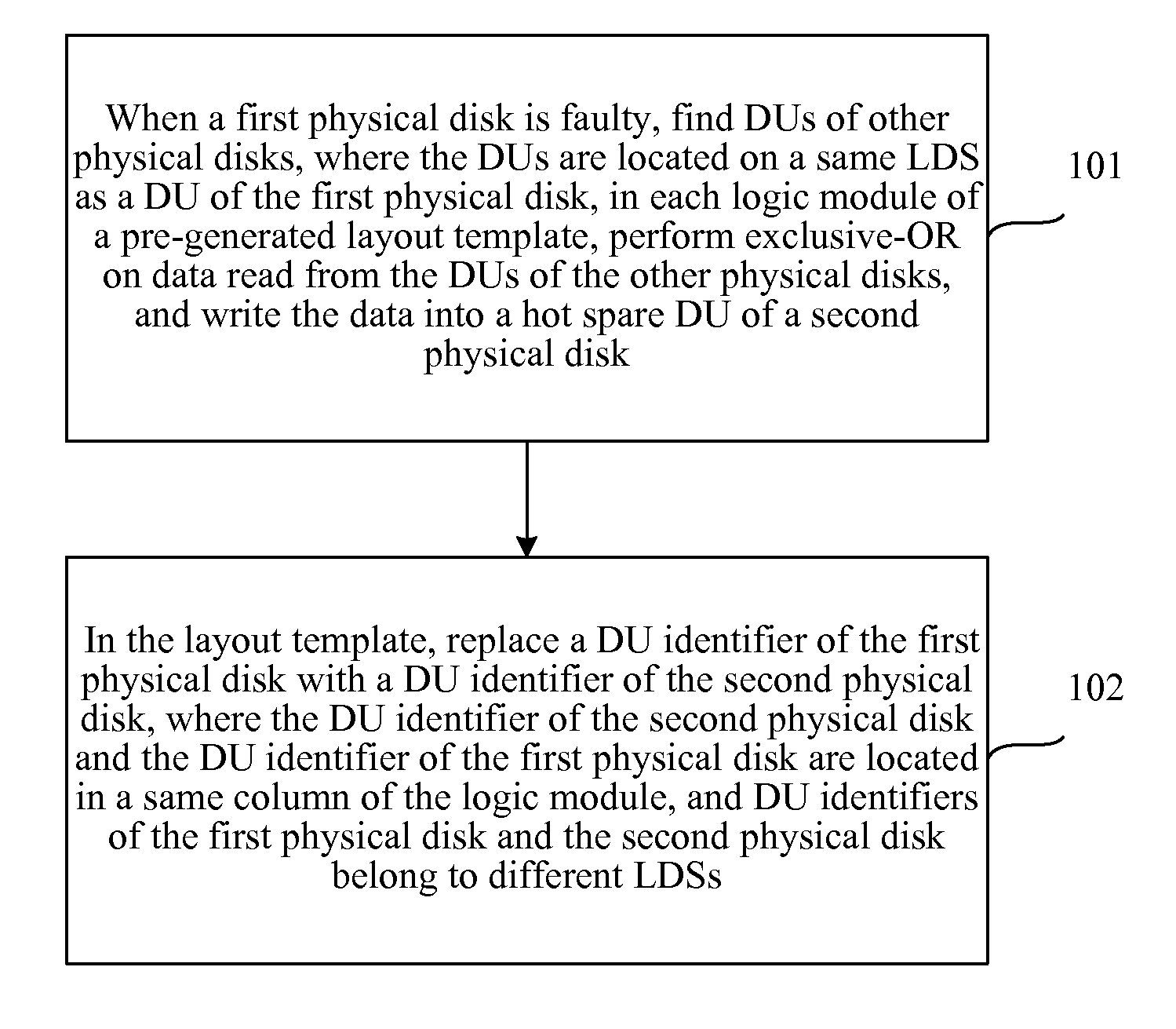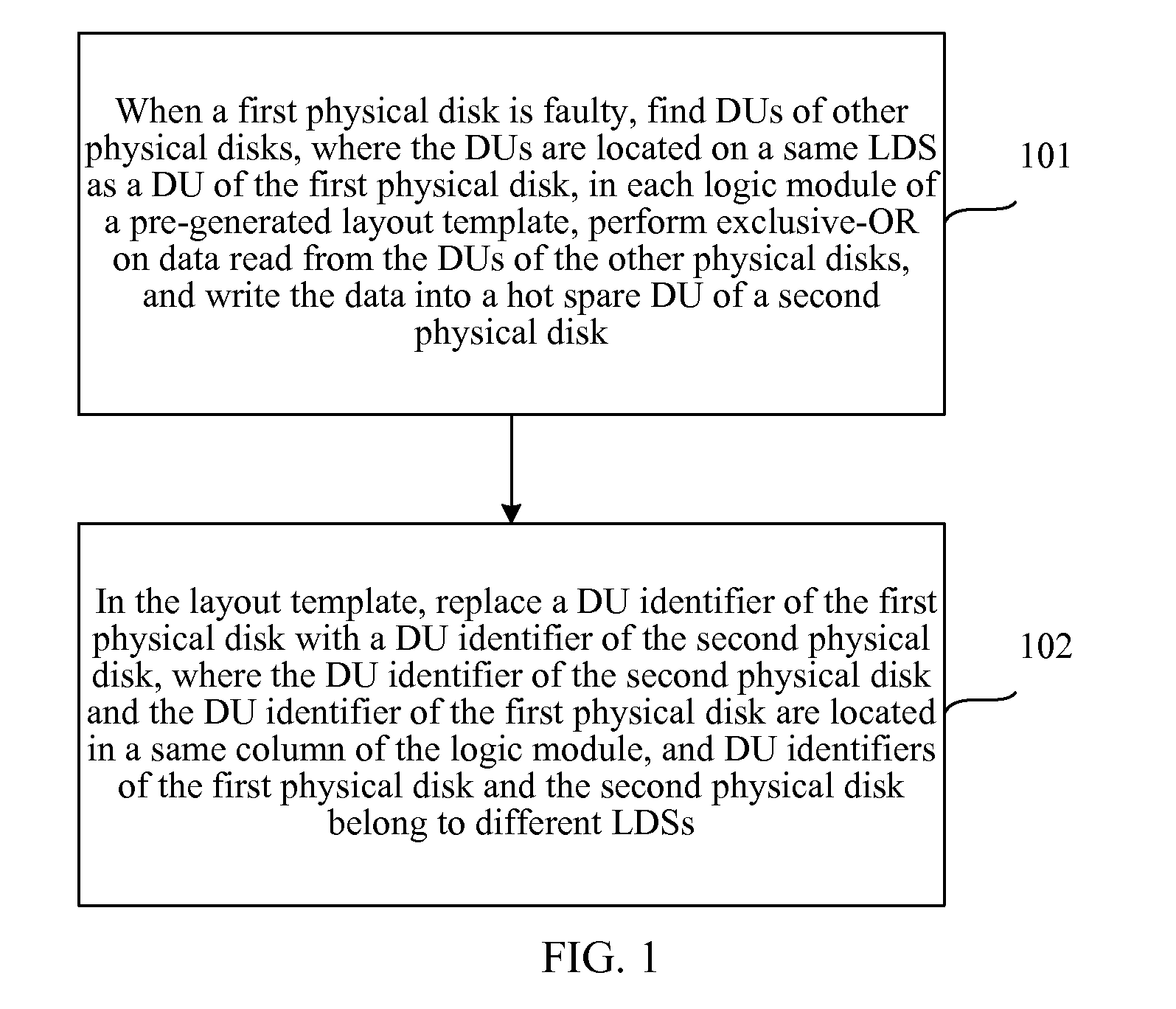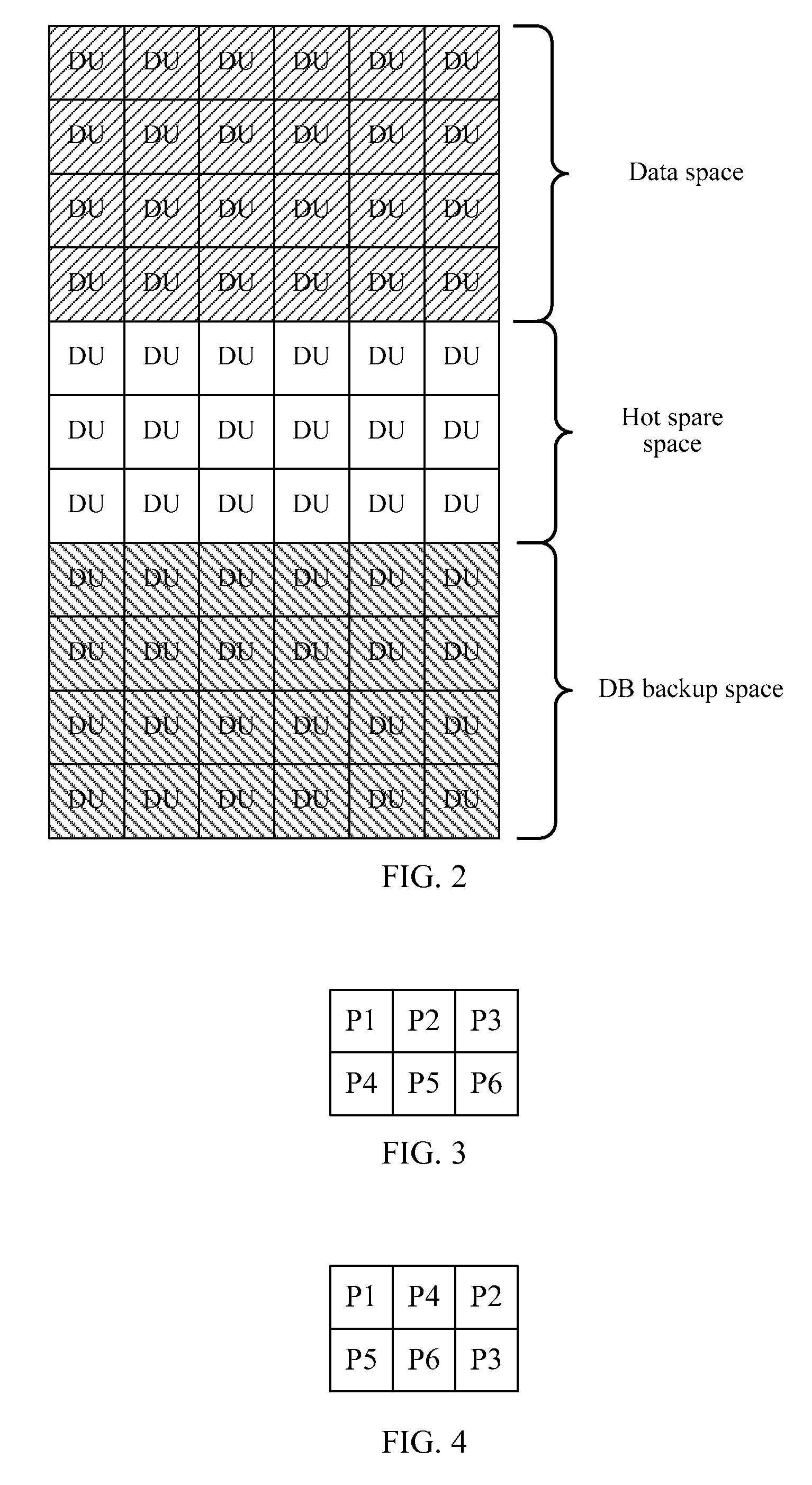Method and apparatus for reconstructing redundant array of inexpensive disks, and system
a technology of inexpensive disks and arrays, applied in the field of storage technologies, can solve the problems of low raid reconstruction speed, and achieve the effects of reducing the time needed for raid reconstruction and restoration, increasing the reconstruction speed, and reducing the time needed for writing data
- Summary
- Abstract
- Description
- Claims
- Application Information
AI Technical Summary
Benefits of technology
Problems solved by technology
Method used
Image
Examples
first embodiment
[0034]FIG. 1 shows a flow chart of a method for reconstructing a RAID of the present invention, including:
[0035]Step 101: When a first physical disk is faulty, find disk units (Disk Unit, referred to as DU) of other physical disks, where the DUs are located on a same LDS as a DU of the first physical disk, in each logic module of a pre-generated layout template, perform exclusive-OR on data read from the DUs of the other physical disks, and write the data into a hot spare DU of a second physical disk.
[0036]Step 102: In the layout template, replace a DU identifier of the first physical disk with a DU identifier of the second physical disk, where the DU identifier of the second physical disk and the DU identifier of the first physical disk are located in a same column of the logic module, and DU identifiers of the first physical disk and the second physical disk belong to different LDSs.
[0037]The layout template includes m logic modules, each logic module includes two logic disk strip...
second embodiment
[0074]FIG. 16 shows a schematic structural diagram of an apparatus for reconstructing a RAID of the present invention. In this embodiment, the apparatus for reconstructing the RAID further includes a creating module 14, configured to generate a layout template during RAID creation.
[0075]Specifically, the creating module 14 is configured to: arrange DU identifiers of N physical disks according to a preset sequence, and divide the DU identifiers into two rows, where, when N is an even number, each row includes N / 2 DU identifier; and when N is an odd number, one row includes ((N+1) / 2)−1 DU identifiers and one virtual DU identifier, and the other row includes (N+1) / 2 DU identifiers; fix a first DU identifier, and when N is an even number, sequentially shift the other DU identifiers (N−1) times to generate (N−1) logic modules; when N is an odd number, sequentially shift the other DU identifiers N times to generate N logic modules; and remove a column including the virtual DU identifier i...
PUM
 Login to View More
Login to View More Abstract
Description
Claims
Application Information
 Login to View More
Login to View More - R&D
- Intellectual Property
- Life Sciences
- Materials
- Tech Scout
- Unparalleled Data Quality
- Higher Quality Content
- 60% Fewer Hallucinations
Browse by: Latest US Patents, China's latest patents, Technical Efficacy Thesaurus, Application Domain, Technology Topic, Popular Technical Reports.
© 2025 PatSnap. All rights reserved.Legal|Privacy policy|Modern Slavery Act Transparency Statement|Sitemap|About US| Contact US: help@patsnap.com



